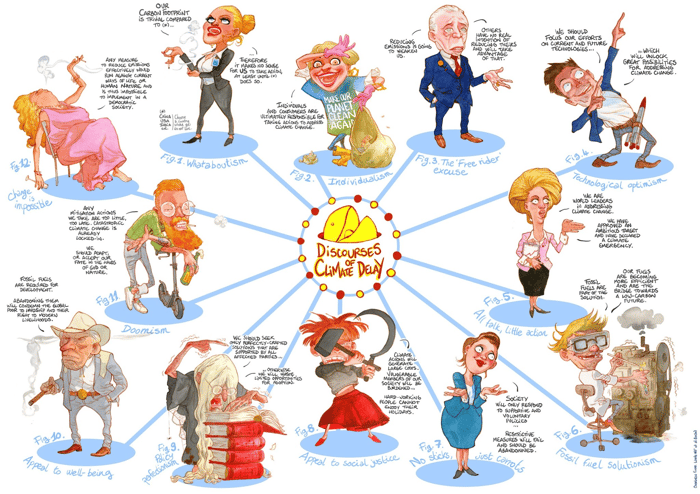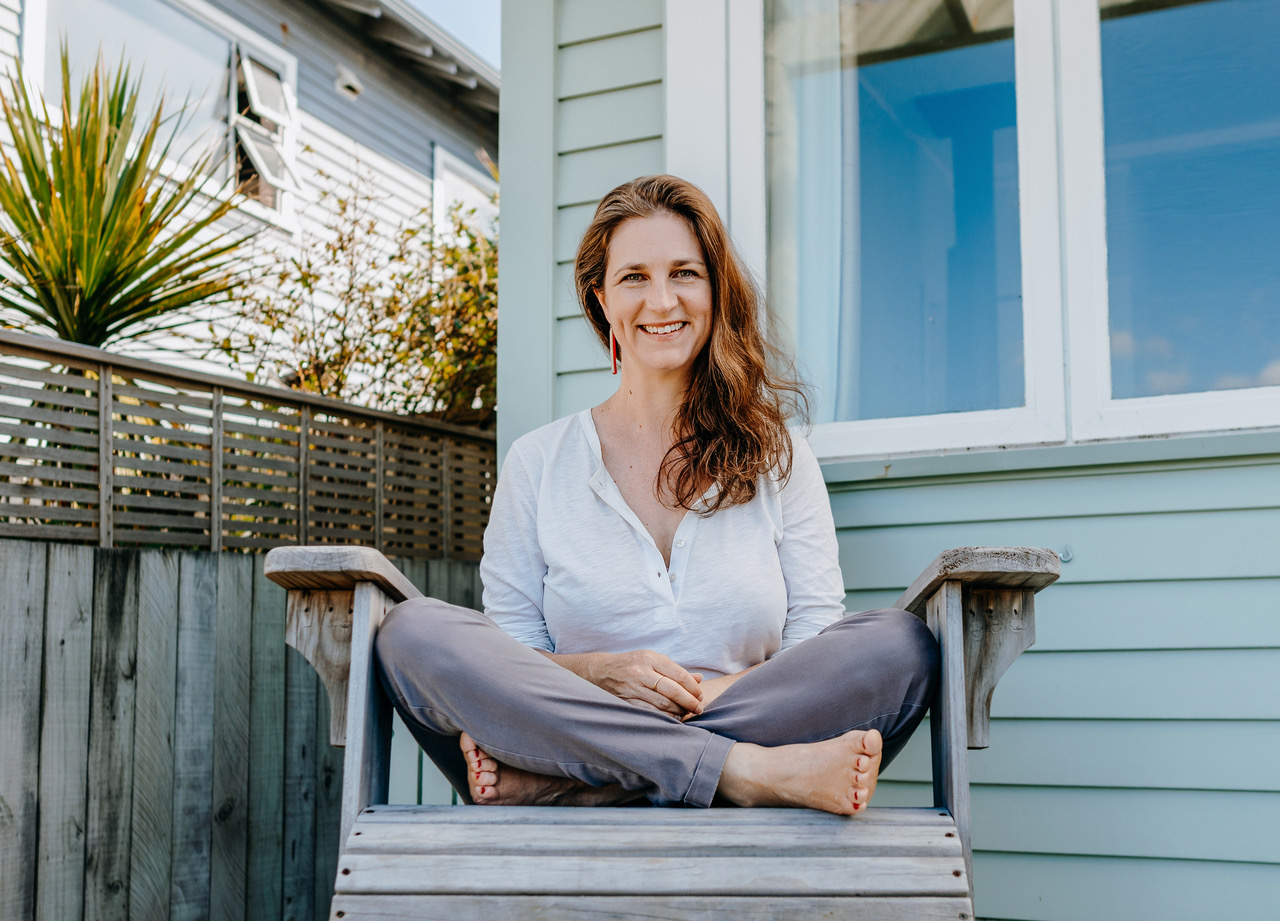Build the Movement - what it means and why it matters
5 min read • Sep 26, 2025 1:41:25 PM

This is the second of four blog posts to dig into each of The Climatics' funding focus areas: elevating the story, building the movement, transforming the politics, and supporting Māori-led action. We've chosen these four focus areas because they each share three qualities: they create outsized positive impact for climate, they are where philanthropy is best suited to contribute, and because they are often underfunded.
In this post we'll explore what we mean by "Build the Movement" and why it matters now.
One aspect of climate change that can still leave me feeling overwhelmed is when I fall into the trap of focusing on our powerful ‘opponents’. But this week I was reminded by a true veteran of the environmental movement that as soon as you position yourself against an ‘enemy’, you’ve lost. Because we need to make it possible for everyone to align around the path forward - when the person opposite you is your ‘enemy’, then it’s close to impossible for them to support your solution. Whether you agree with that or not (and I think climate litigation is a brilliant example of how this advice, while useful, might not be universal), it’s a fascinating provocation.
When it comes to climate change, a big part of the challenge comes down to power - who has it, who doesn’t; who is using it, who isn’t. Movements work with people power - building it, coalescing it, and using it to create the change that people want. Organised communities can win policy changes that create emissions reductions far greater than what would be achieved by spending the same money on direct interventions, making movement building one of the most cost-effective ways to tackle climate change.
What effective movement building looks like
Movements create systemic change by building power: enabling people to take the resources they have and turn them into the power to make the change that they want. This generally means a critical mass of people who work to influence decision makers. Movements also have the potential for broader change by shifting public opinion - for example, research shows climate concern increased in the UK after Extinction Rebellion protests, and Black Lives Matter increased online searches for "systemic racism" by over 100x during protests - demonstrating the power of movements to reshape political conversation.
We can think about movement building as building broad support (think number of people submitting on a proposed Bill in parliament or in a protest march) or building deep support. For climate, both are needed. We can also think about it as activating people who already cared but wouldn’t have otherwise acted, and as bringing people on a journey from ambivalence to understanding how an issue impacts them personally, so much so that they are moved into action.
When it comes to climate change, people support climate action in principle (which is thanks to the work that has come before this moment), but their support can weaken when solutions feel costly or unfair. Mobilising those impacted by specific solutions so they are heard and can meaningfully shape those solutions can build deep and enduring support. Some of the most effective climate movements look beyond just climate, either building partnerships and coalitions with other groups where the root causes of issues are aligned, such as workers rights (a movement of movements, as it were). This helps ensure that climate policies are designed with the communities most affected, not imposed on them.
The Aotearoa Context
There is a strong history of environmental movements in Aotearoa. The nuclear-free movement worked for decades, building deep and broad support, and ultimately securing enduring changes to legislation. The climate strikes mobilised thousands of young people and building public and political support for government action, contributing in no small part to the Zero Carbon Act in 2019. However, policies like the clean car discount were vulnerable (and ultimately scrapped) partly due to perceptions about who would benefit most, showing the need for also building support for specific solutions, not just climate action generally.
These experiences point to the importance of base diversification - moving beyond traditional environmental constituencies to engage communities most affected by both climate impacts and economic pressures. This includes Māori and Pacific communities, low-income households facing energy poverty, workers in transition industries, and rural communities adapting to climate risks.

Photo credit: David Tong
What this means for The Climatics funding
When we say The Climatics will fund "Building the Movement," we're looking to support organisations that are working with these strategic dimensions. This might include:
- Community organising that connects local concerns with climate solutions - making it personal and therefore compelling in a way that brings those people into the movement - particularly communities that haven't traditionally been centred in environmental movements
- Coalition building between environmental groups and other movements
- Mobilising people to compel government towards policies where climate considerations can be embedded, or so climate solutions address immediate economic and social challenges (e.g. contacting local representatives, making policy submissions)
- Mobilising people against damaging corporate practices (e.g. boycotting, shareholder activism, workplace action)
- Base diversification efforts that expand who sees themselves as part of climate action
The research shows that movements activate people by building their sense of agency and giving them direct opportunities to act. So this definitely isn’t an exhaustive list. In fact, I’d love to hear your favourite movement building approaches.
Building for the long term
Climate movements need to operate at multiple levels simultaneously. We need the urgency and moral clarity that has defined climate activism. We also need the strategic coalition building that can sustain policy changes over decades.
This isn't about choosing between approaches - it's about ensuring the movement has all the tools it needs. Some organisations excel at mobilising existing supporters. Others specialise in reaching new constituencies. Both approaches strengthen the whole.
The climate crisis demands unprecedented speed and scale of change. Building movements capable of delivering that change requires investing in organisations that understand how to build genuine political power with the people most affected by both climate impacts and economic inequality.
As always, we'd love your thoughts - what movement building approaches have you seen create lasting change?
With hope and determination,

Pip Wheaton - The Climatics Co-Founder
Growing up in rural Australia made Pip intensely curious about humans’ impact on the rest of the natural world. Her childhood saw her planting trees and rounding up sheep, finding snakes in her bedroom and echidna in the garden, and solo walks gazing at exceptionally starry skies. Pip works on climate change, both locally where she now lives in Te-Whanganui-a-Tara, and globally. Her work is informed by systems theory and a fierce sense of justice: her decision to work on climate is based on the recognition it is a symptom of deep faults in our social, economic, and political systems. She has worked in social entrepreneurship, local government, academia, and philanthropy across Australia, South Africa, the UK and Aotearoa. Pip is an award-winning social entrepreneur for founding enke: Make Your Mark, a youth leadership organisation in South Africa.
More recent stories

October 5, 2025
Transform the Politics - what it means and why it matters
This is the third of four blog posts exploring The Climatics' funding focus areas: elevating the sto...

September 19, 2025
Elevate the Story - what it means and why it matters
This is the first of four blog posts to dig into each of The Climatics' funding focus areas: elevati...

October 8, 2025
Support Māori-led Climate Action - what we mean and why it matters
This is the third of four blog posts exploring The Climatics' funding focus areas: elevating the sto...
Join our Community
We’ll send stories and updates from The Climatics, plus ways to be part of climate action in Aotearoa.
Small gifts create big shifts
By pooling donations, small gifts add up fast. And every dollar goes straight to climate projects doing the mahi.

